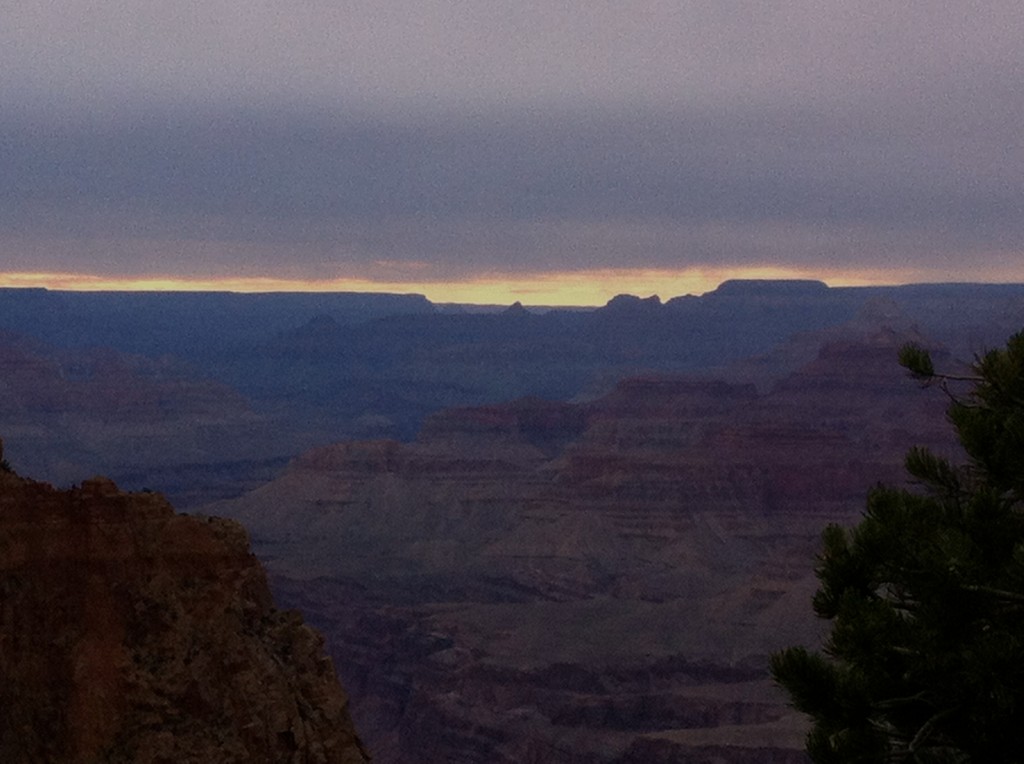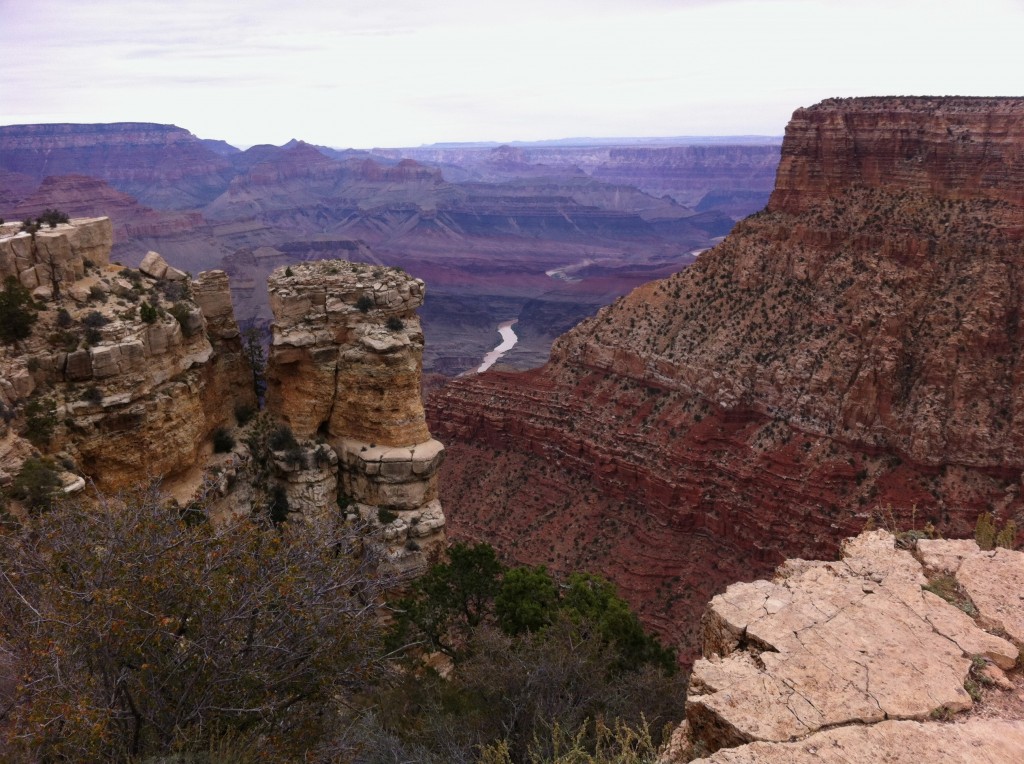
It is always a remarkable event when something you assume you know and understand reveals itself once again to be beyond understanding. I have been to the grandest of canyons several times, but the thrill it elicits with the first sighting from the edge of the Colorado Plateau through which it has carved itself over eons remains bordering on euphoric. It is not the rocks, or the depths, or the ribbon of the river of creation, but rather the glimpse it provides of Creation itself that comes over you. It happens to you every time, no matter what your level of preparation.
The stillness of time transcends. The lava and ash base rock of the canyon , the Vishnu Schist, thrust in a tectonic convulsion some 1.7 billion years ago against the continental plate, lays exposed by the river that began to reveal it to our eye only some six million years ago. Rock, that several billion years ago was not even half again as old as the planet upon which it was created. Through volcanos and inland seas, sediments and pressures, protozoans and dinosaurs, the layered geologic beauty of the canyon lay waiting for visual birth through the erosive force of a mighty river. The entirety of a fulfilled human lifetime is but a fleeting wisp of wind in the immensity that is the measurement of such time. To admit to oneself that reality, is to feel very small, yet very privileged to have it revealed.
The canyon divulged itself to no one that left any record prior to the time of Christ yet existed through innumerable sunrises and sunsets in its current state, with the only appreciation, that of its animal inhabitants. The scale of the canyon such that the same species of squirrel has evolved into two distinct visages, the black chested whited tailed Kaibab of the North Rim, and his genetically identical cousin the Abert with his white chest and grey tail, long separated by the chasm. The original settlers along the rim and cliffs left records of attachment but were unable to sustain their existence through the cycles of plenty and drought typical of the region, and fled near silently out of history. The initial caucasians exploring the canyon found it vast and devoid of people, and viewed it as an obstacle to be avoided. It remained to the few who saw it as a potential site of habitation, empty and trackless.
Then, in 1869, perspective was provided. An explorer and geologist John Wesley Powell, hardened to challenge by his military experiences in the recent Civil War and bereft of an arm from the damage of a minnie ball at Shiloh, found himself after the intensity of the war unable to return to the everyday experience of an academic career in Illinois. Powell determined to experience the Grand Canyon from the bottom up as part of an expedition down the length of the mighty Colorado River, and his exploits through the canyon in 1869 and a second expedition in 1871 were for the first time channeled as a shared experience to an enraptured audience through the power of real time mass media, connected by reported stories as serial adventure. To describe the voyage as hazardous is insufficient, but is perhaps preserved in the visual of a one armed, rail thin man manning the rudder of flat boat down level six rapids of an entirely untamed river. The 750 mile voyage of the expedition of ten men from the origin of the Green River in Wyoming through the canyon lands of the Colorado is the stuff of legend. More importantly, it presented America with a new kind of hero, the Naturist, as Powell along with fellow explorer, the Wisconsinite John Muir, presented the American West as more than obstacle, but rather a paradise of magnificent cultures, vistas, and geology best appreciated when preserved, rather then overcome.
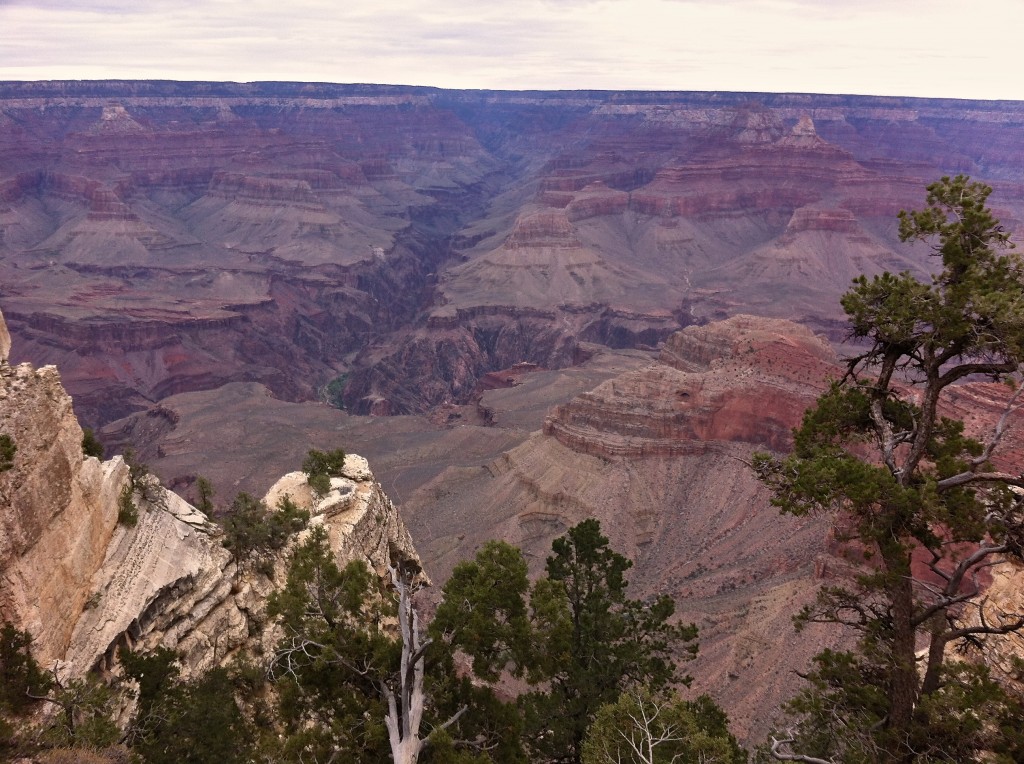 The final linking of the concept of America’s image of itself linked fundamentally to its land came in the personhood of President Theodore Roosevelt, who established the core of America’s heritage preserved through its concept of national parks. He saw in particular the Grand Canyon critical in leaving the natural scape as untouched as possible to better absorb its eternal grandeur:
The final linking of the concept of America’s image of itself linked fundamentally to its land came in the personhood of President Theodore Roosevelt, who established the core of America’s heritage preserved through its concept of national parks. He saw in particular the Grand Canyon critical in leaving the natural scape as untouched as possible to better absorb its eternal grandeur:
“In the Grand Canyon, Arizona has a natural wonder which is in kind absolutely unparalleled throughout the rest of the world. I want to ask you to keep this great wonder of nature as it now is. I hope you will not have a building of any kind, not a summer cottage, a hotel or anything else, to mar the wonderful grandeur, the sublimity, the great loneliness and beauty of the canyon. Leave it as it is. You cannot improve on it. The ages have been at work on it, and man can only mar it.”
The eventual hold on the American consciousness progressed through the first half of the twentieth century as the canyon vistas and campsites became increasingly available to the average American. Starting with the development of the railroad to the rim, the gradual concept of individual travel and exploration as the country became more mobile through the automobile made the concept of taking in the beauty of the natural landscape of America a national obsession. The country’s population increasing looked to the West as a potential place of permanent attraction and residence. Yet, predictably, the diverging view of ‘progress’ proved a powerful enemy of President Roosevelt’s vision. As hard as it is to imagine, the vistas of the Grand Canyon could have been forever marred as had its sister magnificent creation, the Glen Canyon. In 1963, the special place that was Glen Canyon was tragically drowned in the development of the manmade inland sea of Lake Powell created by the Glen Canyon Dam.
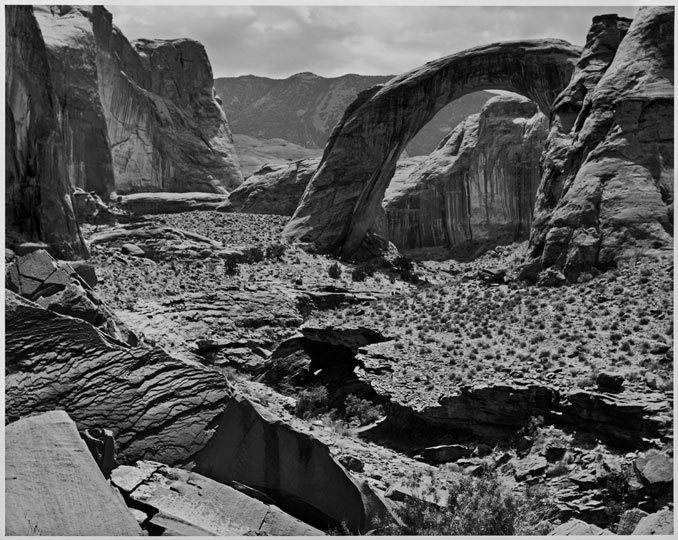
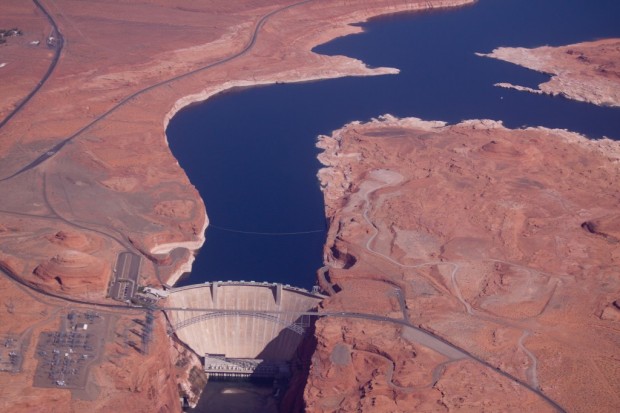
The presence of a series of dams to tame the Colorado River for water resource, flood prevention, hydroelectric power, and recreation secured with the Boulder and Glen Canyon dams was actually contemplated for the stretch that is the Grand Canyon through the Bridge and Marble Canyon dam projects. The conversion of portions of the Grand Canyon National Monument into a lake for water skiers came too close to contemplate, with only a final securing of public outcry as groups such as the Sierra Club, recognizing their error in not standing tall with the Glen Canyon project finally marshaling the collapse of the political will for Congress to pass funding for the Bridge and Marble dam projects in 1966. It probably as much as anything led to the formation of the political environmental movement, with the eventual formation of the Environmental Protection Agency and the idea of environmental impact statements becoming a dominant influence with any construction project, big or small.
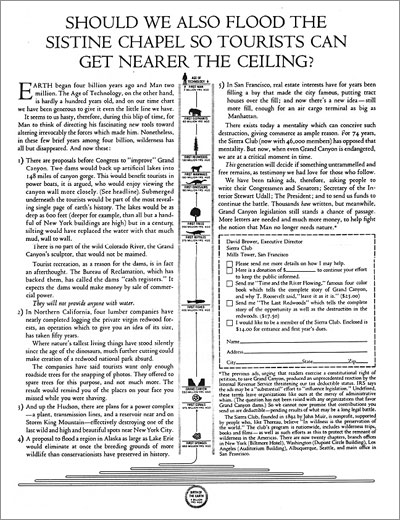
Of course the Grand Canyon is constantly evolving, and in the saga of time may possibly be effected by nature such as to no longer be grand, flooded again by inland seas or eroded through wind and time into unrecognizable patterns. It is however, in our brief window of time, human time, that the canyonland exists for us to understand our on part in the story, small as it may be. We must balance our need to be, to forever demand increasing amounts of electricity and water in isolated tracts of the world with our need to be a part of that world, and pass it along to our children, and children’s children.
To be in canyonland is to walk the road of time from all that is before and to all that will be as a traveler, not as a conqueror. At the edge of the canyon lies the home of our own Creation through mists of time and stars, wind and water, death and rebirth. At the edge of the canyon, in the land of the canyon, for every traveler on every journey, there is the discovery of one’s self and the universe beyond.
